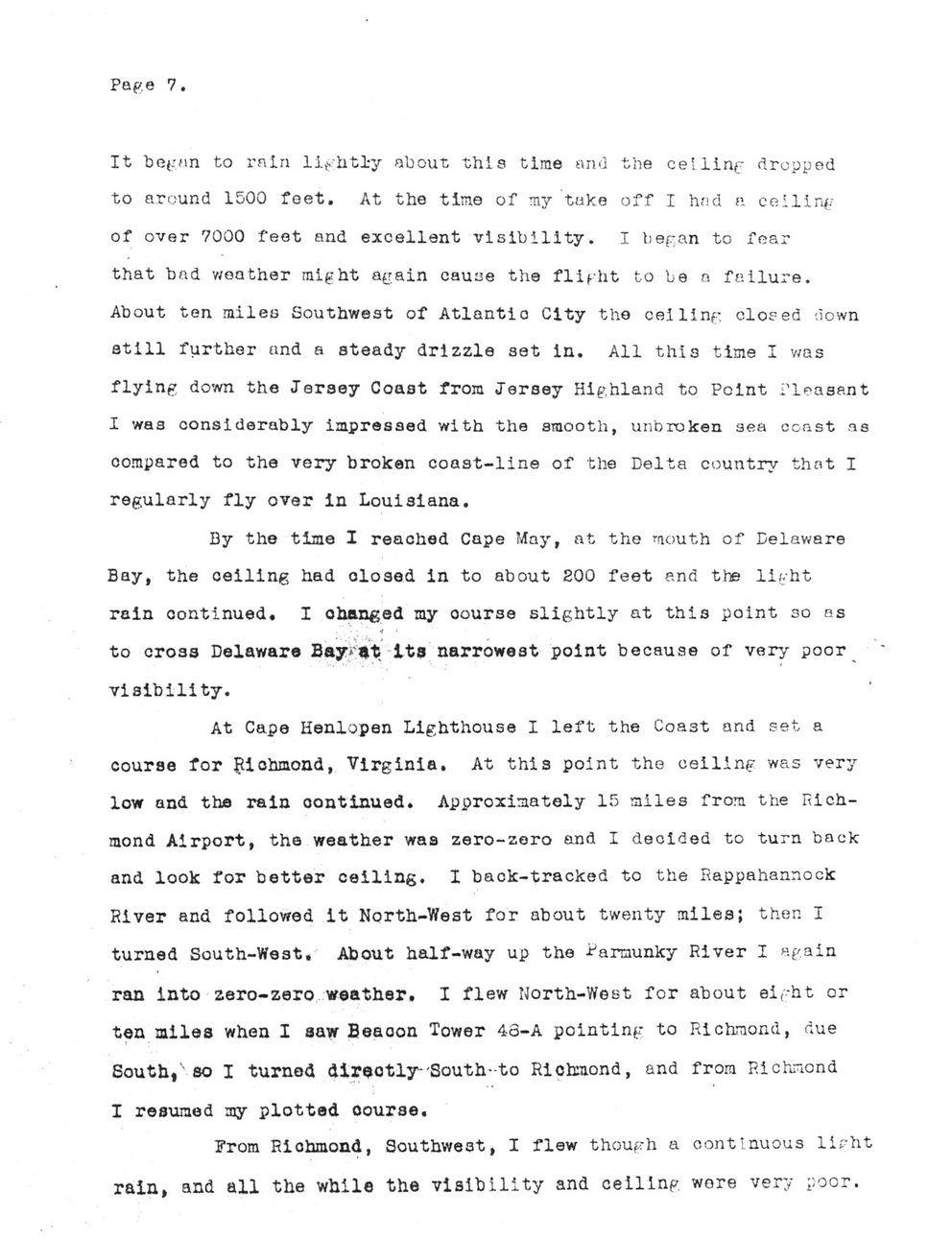This text was obtained via automated optical character recognition.
It has not been edited and may therefore contain several errors.
Page 7. It be^in to rain lightly about this time and the celling dropped to around 1500 feet. At the time of my tuke off I hnd a ceiling of over 7000 feet and excellent visibility. I began to fear that bad weather might again cause the flight to be a failure. About ten miles Southwest of Atlantia City the ceiling closed down still further and a steady drizzle set in. All this time I was flying down the Jersey Coast from Jersey Highland to Point Pleasant I was considerably impressed with the smooth, unbroken sea const as oompared to the very broken coast-line of the Delta country that I regularly fly over in Louisiana. By the time I reached Cape May, at the mouth of Delaware Bay, the ceiling had olosed in to about 200 feet and the lifht rain continued, I ohanged my oourse slightly at this point so as to cross Delaware Baj^t.-lta narrowest point because of very poor visibility. At Cape Henlopen Lighthouse I left the Coa3t and set a course for ?iohmond, Virginia. At this point the ceiling: was very low and the rain continued. Approximately 15 miles from the Richmond Airport, the weather waa zero-zero and I decided to turn back and look for better ceiling. I baok-tracked to the Rappahannock River and followed it North-West for about twenty miles; then I turned South-West, About half-way up the Parmunky River I again ran into zero-zero weather, I flew North-West for about eight or ten miles when I saw Beacon Tower 48-A pointing to Richmond, due South/ so I turned dir$otly- South-to Richmond, and from Richmond I resumed my plotted oourse. From Riohmond, Southwest, I flew though a continuous lipht rain, and all the while the visibility and celling wore very poor.

Chapman, Henry B. Chapman-018